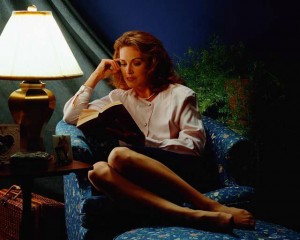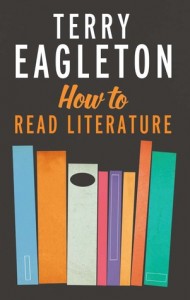Learning to learn: the heart of reading
 Ally of Scoop.it (the curation service that I use for Literature & Psychology) describes how she went about learning to read for deep meaning. She based her strategy on an article by Maryanne Wolf, the John DiBiaggio Professor in the Eliot-Pearson Department of Child Development at Tufts, and author of Proust and the Squid: The Story and Science of the Reading Brain.
Ally of Scoop.it (the curation service that I use for Literature & Psychology) describes how she went about learning to read for deep meaning. She based her strategy on an article by Maryanne Wolf, the John DiBiaggio Professor in the Eliot-Pearson Department of Child Development at Tufts, and author of Proust and the Squid: The Story and Science of the Reading Brain.
Although Ally focused on reading nonfiction, the process would be similar for someone wanting to explore a particular topic in literary texts—for example, fiction that deals with the relationships between mothers and daughters.
Do We Need to Be Told How to Read?
 Also in the category of learning how to read, academic cultural critic Terry Eagleton has a new book out, How to Read Literature.
Also in the category of learning how to read, academic cultural critic Terry Eagleton has a new book out, How to Read Literature.
I haven’t read Eagleton’s book yet, though I have bought it and look forward to finding out what he has to say. But novelist William Giraldi has read How to Read Literature, and in this article he offers an unsympathetic evaluation. In their symbiotic relationship, such clashes between practitioners (writers) and theorists (critics) are often more informative than anything either alone has to say.
Can books make us better people?
And why do we want to read, anyway? One reason might be that literature makes us better people. Or does it?
This question has been another hot topic of debate recently in the literary world. In this article in the Christian Science Monitor Husna Haq recaps the argument and provides links to many of the articles she discusses. She concludes:
Nonetheless, the question remains – does literature make us better?
If we turn to literature itself and the nuanced messages it conveys, we may find that the answer, unlike the question, is not nearly so clear-cut and precise. Literature, after all, deals with the messy, the ambiguous, the muddled, and, we suspect, that’s just what we have on our hands with that deceivingly straightforward question.
Empathy-Free Entertainment
Noah Berlatsky tackles the same issue over at The Atlantic:
Art, we’re often told, encourages empathy. By watching or reading about different people, or different situations, we become able to understand and sympathize with a broader range of perspectives. Fiction connects you to other people—or as Chuck Klosterman said, “Art and love are the same thing: It’s the process of seeing yourself in things that are not you.” There was even a study last year that found that “experience-taking changes us by allowing us to merge our own lives with those of the characters we read about, which can lead to good outcomes.” Literature broadens you; science says so.
But he bases his argument on recent movies (and, in some cases, on the comics that inspired those movies) rather than on just literary texts. And in those works he finds a bleak message:
What matters are these soulless, hollow, fungible icons, and the assurance that they will continue forever as around them all the mere humans effervesce like ghosts. This art isn’t about empathy or love. Instead, it’s about worship, about pledging fealty to our invented, charismatically uncaring, gods. Our corporate fictions offer the blank joy of not caring, whether about creators, actors, strangers, or ourselves.
Book Domino World Record: Seattle Public Library Launches Summer Reading In Style (VIDEO)
On a much happier note:
Seattle Public Library just set an unusual world record in its incredible flagship building: the world’s longest book domino chain.
Created to launch its summer reading program, 2,131 books were used in the service of this magical video that you can watch above, filmed on May 31st. Our favorite part? The silent summer readers sitting among the books as they quietly fell around them.
